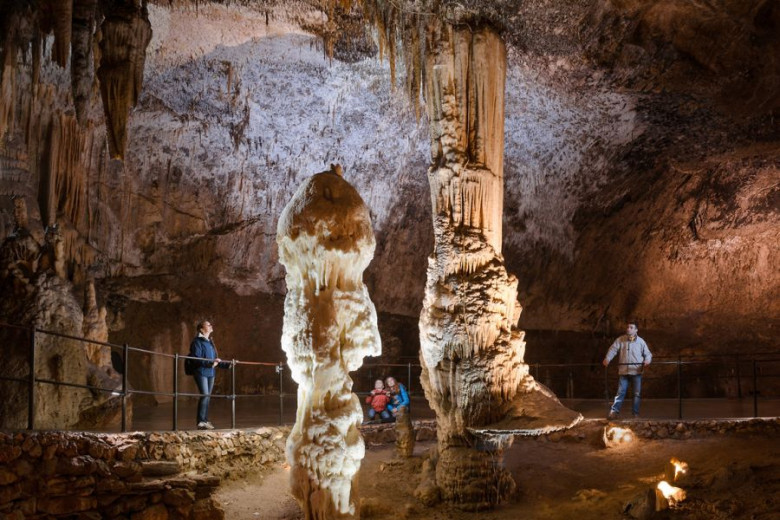Date: 21. January 2020
Time to read: 2 min
Postojna Cave is not only a world-famous attraction and one of the most beautiful caves in the world, but is also the only cave with its own rail network.
Postojna Cave is an exquisitely beautiful work of natural sculpture, a place of fantastic dimensions and mystical inspiration. An incredible labyrinth of passages, galleries and chambers, a huge diversity of karst phenomena and more than 150 subterranean animal species are the reasons why visitors continue to climb enthusiastically aboard the cave train.
Postojna Cave, the largest cave in Slovenia's classical Karst, is one of the most beautiful and most visited tourist attractions in Europe and, indeed, the world.
It is visited by more than 500,000 tourists every year. A total of 5.3 kilometres of the cave is currently open to visitors. The cave is located close to the town of Postojna and is part of the largest karst cave system in Slovenia.
It is a little over 20 kilometres long and reaches a depth of 115 metres at its deepest point.
The temperature in the cave is constant and ranges between 8 and 10 °C. The cave was created by the river Pivka, which disappears underground be-neath a hill called Sovič on the edge of Postojna's karst polje and continues underground towards its subterranean confluence with the river Rak in Planina Cave before flowing out onto the surface again as the river Unica. Besides Postojna Cave and Planina Cave, the Postojna Cave system includes Black Cave, Otok Cave, Magdalene Cave and Pivka Cave, among others.
Postojna Cave is also famous as the home of a type of cave salamander known as a proteus or olm and popularly referred to as the human fish . The "Concert Hall" within the cave has excellent acoustics and has frequently hosted con-certs by symphony orchestras. It has a volume of 3,000 m3 and can hold up to 10,000 people. Old inscriptions on the walls of the cave show that it was already receiving visi-tors in as early as the thirteenth century. An official visitors' book has been kept since 1819. Electric lighting was installed in 1884, to replace the flaming torches and candles previously used.
Railway tracks were laid in the cave in 1872. To begin with, visitors would sit in carts that were pushed along the tracks by cave guides. Today the trains are pulled by small electric locomotives. More than 34 million visitors have passed through the cave to date. Postojna Cave is the only show cave in the world with its own cave railway.
The train ride through the passages and chambers allows visitors to gain a sense of the sheer size and impos-ing scale of this underground world, where our geological past is recorded in a unique way.
Visitors to Postojna Cave can admire dripstone formations such as stalagmites and stalactites of different shapes, sizes, colours and ages, along with flowstones – sheetlike deposits of calcite – and other works of art created by nature over the course of millennia and admired in centuries past by kings, emperors, presidents and other important figures. Since the mid-seventeenth century Postojna Cave has also fascinated scientists and researchers and is today known as the cradle of speleobiology – the science of life underground.












